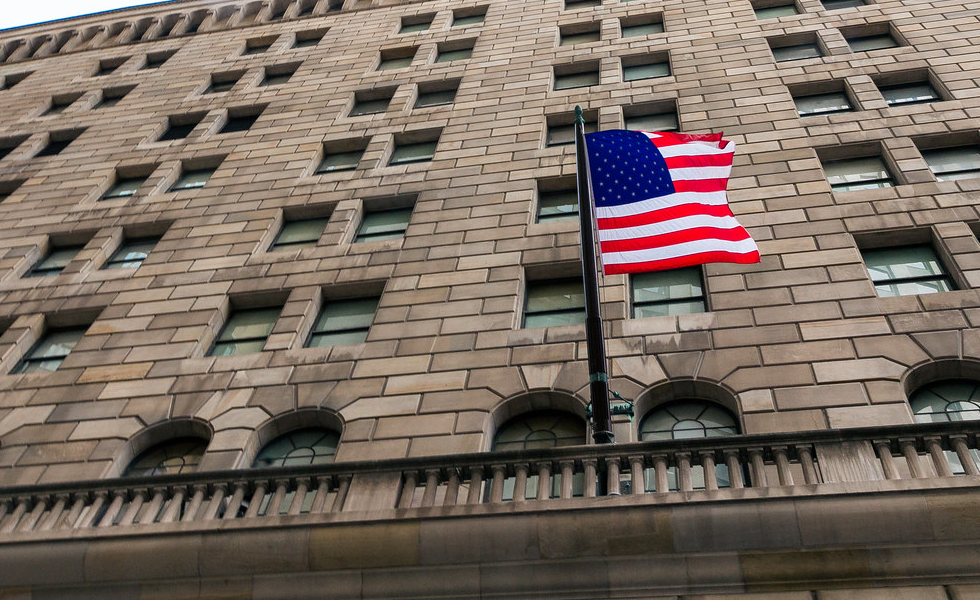Carmignac: US economy to take centre stage at Jackson Hole

The precarious state of the US economy looms large as we approach Jackson Hole, the annual central-bank jamboree in Wyoming. Investors’ eyes will be firmly focused on Jerome Powell as he delivers his update this Friday.
The US economy is slowing down. Consumers are retrenching but they haven’t fallen off a cliff, and the jury is still out as to whether the jobs market is cooling or experiencing something more significant. And, with producer and consumer inflation at, or edging closer to, the Federal Reserve’s target, it’s likely the US central bank will signal the end of its ‘wait-and-see’ period, paving the way for the removal of some monetary policy restrictiveness.
Having maintained policy rates at a 20-year high for more than a year, Powell is anticipated to give the greenlight for interest rates to be lowered at the 18 September meeting. This will trigger the start of a monetary easing cycle, for which we expect one 25 basis point interest rate cut per meeting for the remainder of the year. He has taken his time, likely driven by a desire to avoid multiple directional changes given the adverse impact on consumer and economic confidence and thus, on assets’ risk premia. Now, with all boxes checked, the Fed will hope it can avoid ‘fine tuning’ or a ‘one-and-done’ approach and instead, embark on a genuine easing cycle.
As for a US recession, we still believe it can be averted. By loosening loan standards and lowering mortgage rates, banks are already pre-empting the Fed’s course, which in turn should help the economy. But the race between recessionary dynamics (fewer jobs being created, economic data surprising on the downside) and policy easing has started. And one outpacing the other will determine where the economy will land. For now, domestic policy uncertainty and the increasing probability of a divided government following November’s elections, mean most of the heavy lifting will fall on monetary policy.
The Fed, recognising the multitude of risk factors at play, has already moved to a more “balanced approach” to its dual mandate of employment and price stability. Hence, given the current economic backdrop, we expect the institution to be dependent on both fiscal progression and labour market developments, following its initial gradual 25 basis points (bps) cuts.
At this stage, the main risk rests with the apparent divergence between what Powell is expected to signal in terms of pace (one cut to begin, and then a series of 25 basis points insurance cuts) and what some market participants are expecting (50 basis point for the September meeting - which we find optimistic given the state of the economy). Powell, cognisant of this dichotomy – and the sensitive state of markets - will no doubt choose his words wisely.
Overall, equity markets are expected to react positively to any indication, and vindication, that US monetary policy easing is about to begin – especially those so-called bond proxies typically found in healthcare, consumer staples or real estate. While government bond markets could cool down given their relatively high hopes on the potential for the Fed to deliver a jumbo cut as soon as September.







